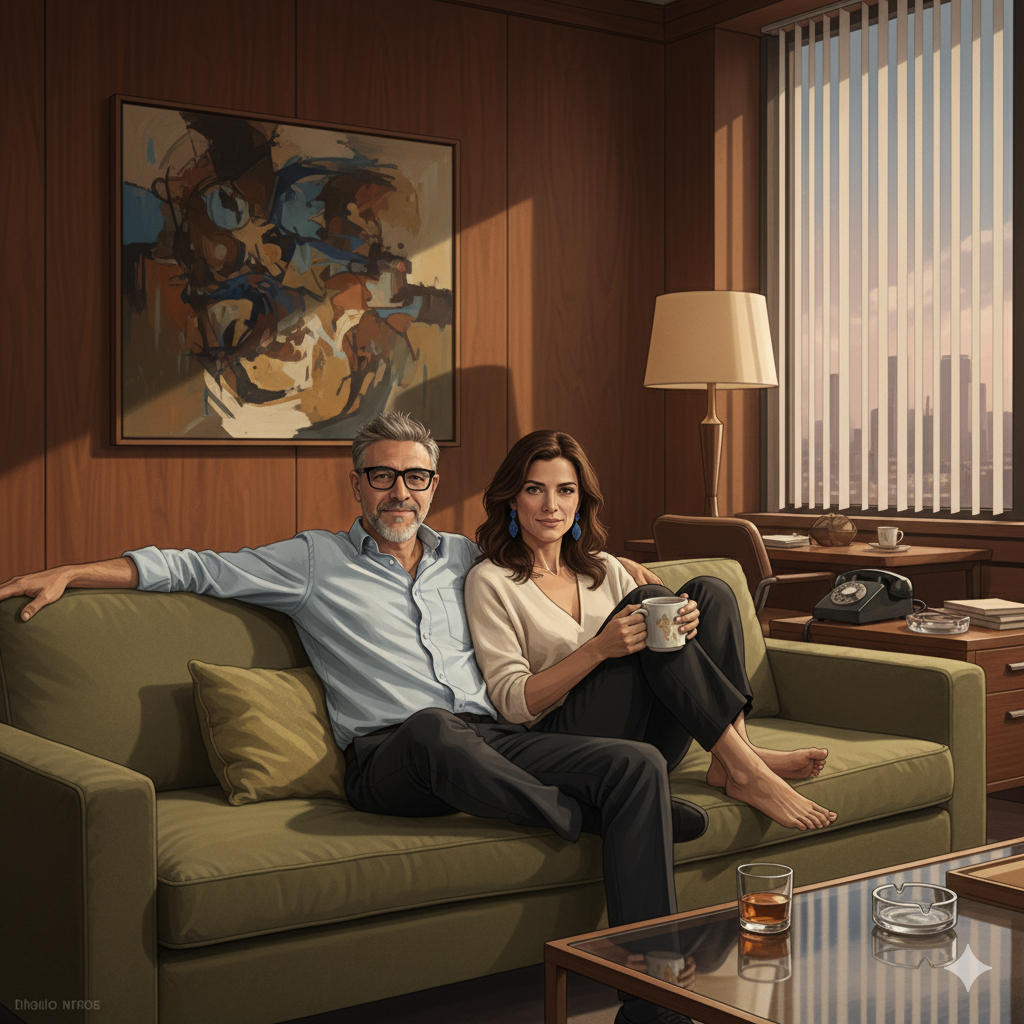You know how most things that feel too polished are usually bullshit? Sales centers are the apotheosis of this. They are temples of pre-construction hype built specifically to trigger a dopamine spike and loosen your wallet before you have a chance to sober up and check your bank account.
I didn’t start out trying to figure out why people buy imaginary condos. I was just trying to understand the weird alchemy of the sales pitch. But the question is more fundamental: What makes a deal feel real? It’s not the numbers—any idiot can run a cap rate. It’s what transforms a slick brochure into a place where you might, say, burn toast every morning for the next decade.
The traditional sales center is what we call Real Estate Brand 1.0. They are not selling property; they are selling a parfume.
The Parfume Model’s Absurdity
Think about it. The Parfume Model is founded on the idea of vague luxury, emotions, and a perpetual, filtered sunset. You walk in, and everything is designed to be universally aspirational and locally inaccurate. The model unit is 20% larger than the one you can afford, the light fixtures are inexplicably fifty grand extra, and the air smells like “Sandalwood Ambition.”
It’s built to make you feel like you’ve already won, simply by entering the room.
This model still works for actual parfume—you are, after all, only buying thirty bucks of scented alcohol. But for a seven-figure asset where the value is entirely predicated on a specific floor height, window orientation, and the density of the fiber optic cables? It’s over.
The whole structure is predicated on controlled scarcity. A developer commissions maybe three high-fidelity digital models—the Hero Units. These Hero Units are like the three perfectly symmetrical apples shown at the front of the grocery store. Everything else—the C, D, and F layouts—is an abstract floor plan written in tiny print that requires the buyer to engage in massive amounts of uncompensated imagination.
And let’s be honest, most human imagination isn’t up to the task of accurately visualizing 14th-floor corner light in a northeast exposure unit at 4 PM in February. That kind of mental workload is best left to computers, or maybe sadists.
The room, again, isn’t for you. It’s a stage set for the institutional investors and the banks that need a pretty picture for their risk models. The cost of generating that one perfect render of the kitchen with the gold faucet? It’s astronomical, a handcrafted digital asset. They are literally selling the future based on digital cave drawings.
The Javier Problem and The Lie of Scale
This absurdity is why we have the Javiers of the world. Javier is flying in from overseas, heart heavy, coffee in hand, looking at screens flicker with buildings that are still just fancy CAD files. He’s buying a safety net, not a home. He wires the money, buying an idea of a safety net attached to an apartment number he can’t verify.
The broker smiles a fifty-thousand-dollar chandelier smile and says, “Perfect fit. Get it now.” The core of Brand 1.0 is that it requires the buyer to buy blind faith. The entire market is fueled by Javiers buying dark investments, and the sting isn’t the money; it’s the betrayal of hope when the real unit finally shows up two years later, and the promised “gym view” turns out to be a magnificent panorama of the HVAC units.
The market has a scaling problem that Brand 1.0 visualization cannot solve. When you have a 500-unit tower, you cannot manually produce 500 unique, high-fidelity, data-accurate virtual tours. It’s too slow and costs too much.
So, the industry cheats. They produce the three Hero Units, put the other 497 on a shelf, and rely on the buyer’s fatigue and the broker’s charm to close the gap. This is why people who get a real look first—they move faster and choose better. They feel the fit, not the push. But almost no one gets that look. Most just chase the light.
The Parfume Model is structurally guaranteed to fail the buyer 99% of the time, because it can only afford to be true in the three rooms they decided to hand-model. The rest is just a guessing game. It’s like buying a thousand-dollar lottery ticket based on the prize being a unicorn, and you get a goat with a party hat glued to its head.
Real Estate Brand 2.0: The Inevitability of Truth
That’s the kernel of what we built with SuitesFlow. We built it out of that aching space between a vague “maybe” and a confident “yes.”
This is Real Estate Brand 2.0. Our focus is simple: information, pure facts at the disposal of the user on their own device. This is the reality check. The truth. You decide if there is a fit. We don’t need charm or scented candles; we have facts.
Let’s be clear: SuitesFlow is not just another visualization studio. That is Brand 1.0 thinking. We are the only company in the world able to provide unit-specific virtual tours at scale.
Our engine is the VIM (Volumetric Information Multiplier).
Traditional 3D visualization is a craft studio: model, texture, render, repeat. It’s a bottleneck. VIM behaves like a printing press. It takes the limited architectural knowledge locked in blueprints, finds the common DNA across hundreds of units, models that just once, and then multiplies it algorithmically across thousands of variations.
Forget rendering a single model unit. We’re talking hundreds of thousands of units, no problem. How big is the building? Irrelevant. Is it built, unbuilt, or are the units currently occupied? Doesn’t matter.
This is our unique lever: VIM ingests your existing 2D floor plans, CAD files, and material specs. It automatically extrudes the unit volumes, applies finishes parametrically, and links real-world coordinates for light and view. We do not need to access the unit.
The result is a Volumetric Record for every single apartment. This means every unit shows the right layout, the right specs, and the right view from every single room. No guessing, no imagination. The truth.
We give you the Context Map right out the window, showing the actual proximity of life: how many minutes to the good coffee spot, and (crucially) the distance to the nearest decent pizza. You can ask a simple question: “What time does the sun hit the balcony?” and the answer is pulled straight from the VIM Matrix for that specific unit, on that specific floor.
In a world where nobody shares anything out from the sales center other than an abstract dream of a luxury life with a perpetual sunset, you are set to win simply by sharing the truth at scale.
The True Revolution
The result is a fundamental, radical shift in the buyer journey.
The user finds the fit on their own terms. If there is a fit, they click the button and the entire team is at their service. Why? Because the user is now more than qualified. They don’t need to be sold; they are already sold.
When this user finally enters the physical sales center, it’s not the starting of the buyer journey, but actually the end. They aren’t there to be charmed; they are there to sign. They’ve already walked the unit, they’ve checked the light on Tuesdays in December, and they know the HVAC unit is visible, and they decided they don’t care. That’s a real buyer.
This isn’t a silver bullet. It’s the new standard, and it will change real estate forever.
SuitesFlow didn’t kill the dream. It made it warmer—it made it real. In a half-seen world of pre-construction hype, seeing full is the gift. The push fades, replaced by the pull of a sure thing. When the fit is there from the first feel, the “yes” comes easy.
Because when something touches true, you don’t let go. You buy it.



